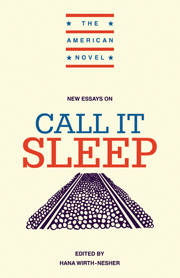Book contents
- Frontmatter
- Contents
- Series Editor's Preface
- Dedication
- 1 Introduction
- 2 The Many Myths of Henry Roth
- 3 Shifting Urbanscape: Roth's “Private” New York
- 4 The Classic of Disinheritance
- 5 Henry Roth in Nighttown, or, Containing Ulysses
- 6 Roth's Call It Sleep: Modernism on the Lower East Side
- 7 “A world somewhere, somewhere else.”
- Notes on Contributors
- Selected Bibliography
- Plate section
1 - Introduction
Published online by Cambridge University Press: 05 June 2012
- Frontmatter
- Contents
- Series Editor's Preface
- Dedication
- 1 Introduction
- 2 The Many Myths of Henry Roth
- 3 Shifting Urbanscape: Roth's “Private” New York
- 4 The Classic of Disinheritance
- 5 Henry Roth in Nighttown, or, Containing Ulysses
- 6 Roth's Call It Sleep: Modernism on the Lower East Side
- 7 “A world somewhere, somewhere else.”
- Notes on Contributors
- Selected Bibliography
- Plate section
Summary
In 1966 Henry Roth published a story in The New Yorker entitled “The Surveyor.” An American tourist is apprehended by the police in Seville for conducting surveying operations at a public thoroughfare without a permit and for suspiciously laying a wreath at the site later that day. “What is this surveying about?” asks the policeman before bringing him to the local precinct. “Well,” answers the tourist, “I tried to locate a place of some sentimental value to myself.” A state attorney dismisses the charges when he suspects that the wreath marked the site where heretics found guilty by the Inquisition were burned to death, among them “relapsed conversos, those Catholics who secretly clung to their Judaic faith.” Startled to find that the state attorney shares this knowledge, the tourist turns interrogator, “Why is everyone ignorant of it but you?” “There may have been personal reasons,” the Spaniard replies, and reveals that his family had the strange habit of lighting a candle on Friday night. Each insists on the personal, private nature of his knowledge; yet each shares a collective memory that sets him apart from the mainstream community. Where exactly is this place, this site of sentimental value not easily recognized by others? This is the question raised by both this story and Roth's monumental novel, Call It Sleep.
In February of 1992, at the age of 86, Henry Roth completed the manuscript of a second book, more than sixty years after the completion of Call It Sleep.
- Type
- Chapter
- Information
- New Essays on Call It Sleep , pp. 1 - 16Publisher: Cambridge University PressPrint publication year: 1996

